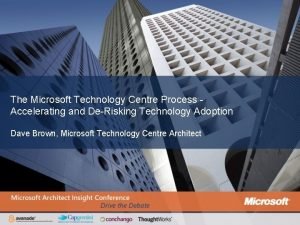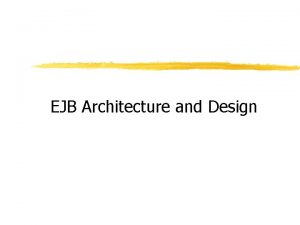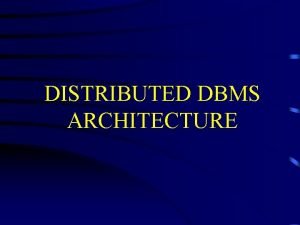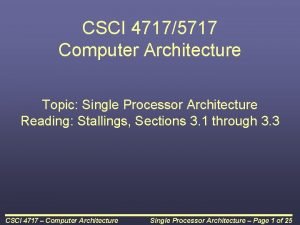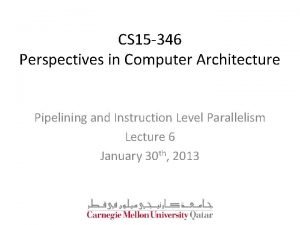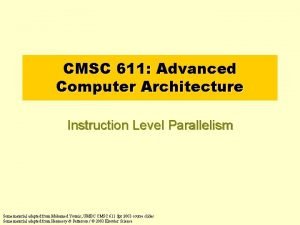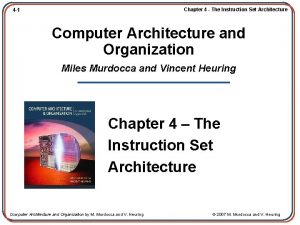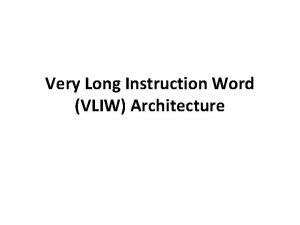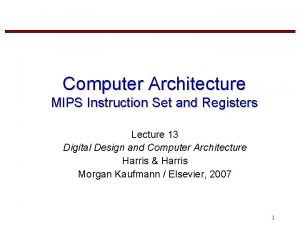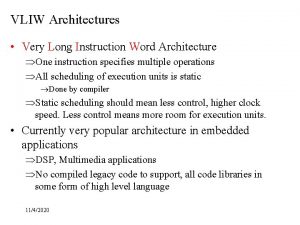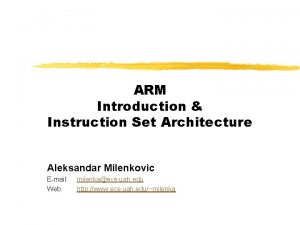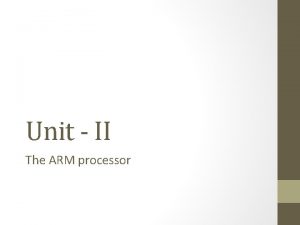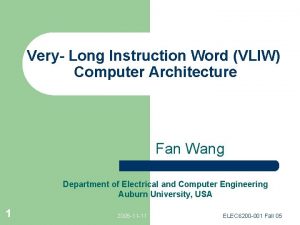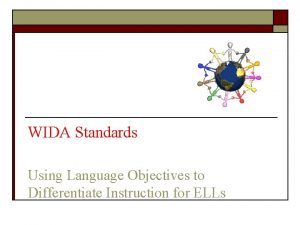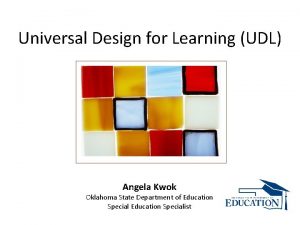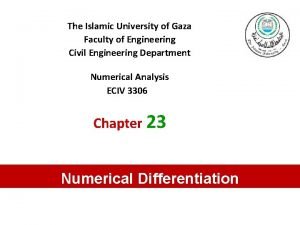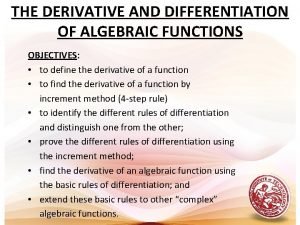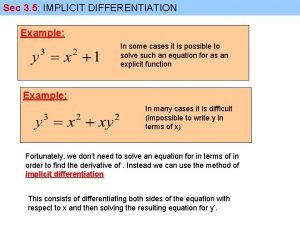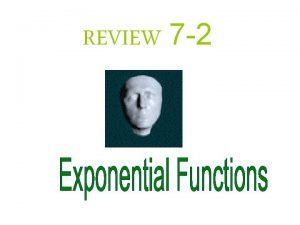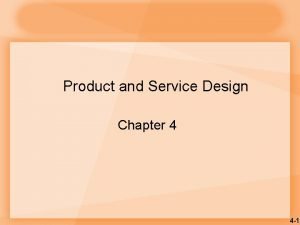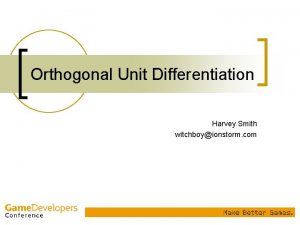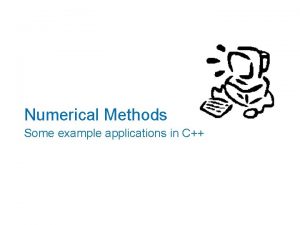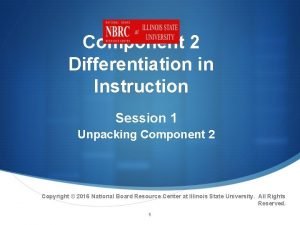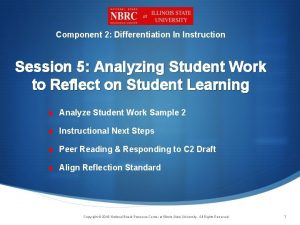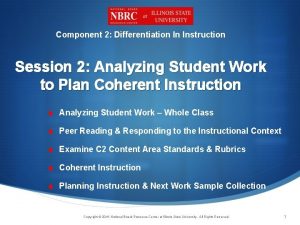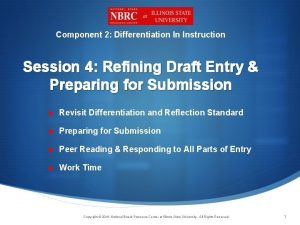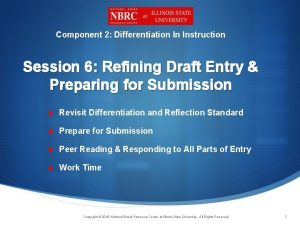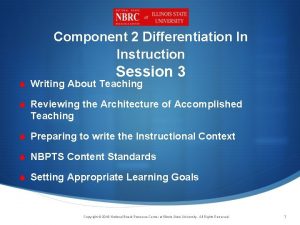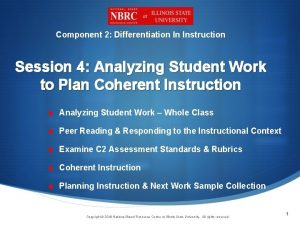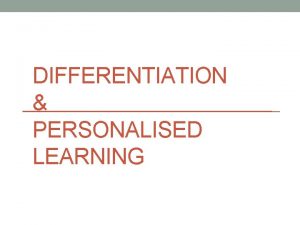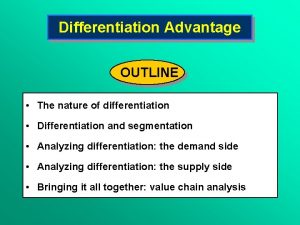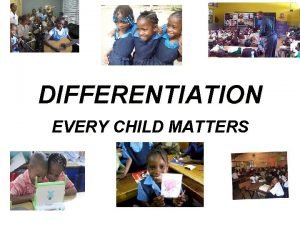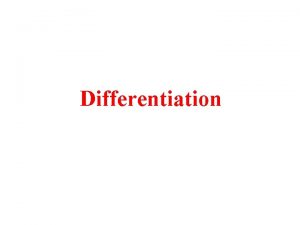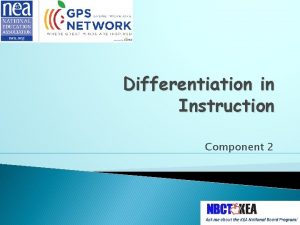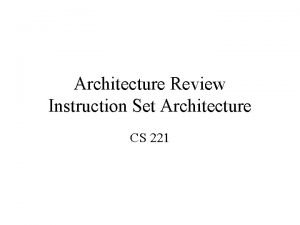Component 2 Differentiation in Instruction Session 2 Architecture









































- Slides: 41

Component 2: Differentiation in Instruction Session 2 Architecture of Accomplished Teaching & Evidence Based Teaching Copyright © 2018 National Board Resource Center at Illinois State University. All rights reserved. 1

Welcome S Be sure to sign in S Please log on to your National Board Profile to monitor your current status S Give examples of what you learned about your students since our last cohort session Copyright © 2018 National Board Resource Center at Illinois State University. All rights reserved. 2

Overview of Session 2 § Core Proposition 1 – Teachers Are Committed to Students & Their Learning § Knowledge of Students Standard (Certificate Specific) § Examining Core Propositions 2 -5 § Architecture of Accomplished Teaching § Evidence Based Teaching § Component 2 Portfolio Entry Expectations Copyright © 2018 National Board Resource Center at Illinois State University. All rights reserved. 3

Topic 1: Core Propositions Core Proposition #1 & Knowledge of Students Purpose: Connect / share information from What Teachers Should Know and Be Able to Do to examples from candidate practice • All Certificates are based on the 5 Core Propositions • Each certificate area has a “Knowledge of Students” Standard Copyright © 2018 National Board Resource Center at Illinois State University. All rights reserved. . 4

Core Proposition #1 – Teachers Are Committed to Students & Their Learning Ø Talk with a partner about what you learned about your students as you completed the Core Proposition #1 Note Taking Guide Ø Describe the range of abilities in your class to your partner Ø Be sure to prompt your partner to ask questions to clarify the information presented Ø Describe how you learn about your students’ cultural, ethnic and/or linguistic backgrounds Copyright © 2018 National Board Resource Center at Illinois State University. All rights reserved. 5

Topic 2: Certificate Specific Knowledge of Students Standards Purpose: Connect the 5 Core Propositions To The Standards • All Certificates are based on the 5 Core Propositions • Each certificate area has a “Knowledge of Students” Standard Copyright © 2018 National Board Resource Center at Illinois State University. All rights reserved. . 6

Reading Your Knowledge of Students Standard Statement — succinct statement of one vital aspect of the practice of the accomplished teaching in this certificate area Ø observable teacher actions Ø impact on students § Elaboration - provides context for standard, explains what teachers need to know, value, & do to fulfill the standard § Examples - illustrate accomplished practice & demonstrate how decisions integrate various individual considerations & cut across the standard document Copyright © 2018 National Board Resource Center at Illinois State University. All rights reserved. 7

How do the Core Propositions Connect with My Certificate Area? S Locate your “Knowledge of Students” Standard specific to your certificate area S A returning candidate may “unpack” their Knowledge of Students Standard to describe what accomplished teaching in their certificate area looks like S What do you already do that is described in this standard? Copyright © 2018 National Board Resource Center at Illinois State University. All rights reserved. . 8

Copyright © 2018 National Board Resource Center at Illinois State University. All rights reserved. 9

Topic 3: Examining Core Propositions 2 - 5 Purpose: Explore examples of 5 Core Propositions from my teaching practice Copyright © 2018 National Board Resource Center at Illinois State University. All rights reserved. 10

Examining Core Propositions 2 -5 § Carousel Activity - you’ll have a chance to share specific examples of how you demonstrate each Core Proposition § Candidates will divide up cohort into at least 4 groups or pairs o spend 3 -5 minutes summarizing the core proposition o discuss & record ways in which you demonstrate each proposition 11 Copyright © 2018 National Board Resource Center at Illinois State University. All rights reserved.

Topic 4: Architecture of Accomplished Teaching Purpose: Explain the AAT Represents the relationship between: • 5 Core Propositions • NBPTS Standards • Accomplished teaching practice Copyright © 2016 National Board Resource Center at Illinois State University. All rights reserved. . 12

Using the AAT when a member of a cohort or PLC: 4 a, 4 d, 4 e, 4 f Enhanced Architecture of Accomplished Teaching START HERE: Domain 1 – Planning & Preparation ASSESSMENT OF STUDENTS 1 b – Knowledge of Students 1 f – Designing Student Assessment • Who are they? • Where are they now? • What do they need & when do they need it? • Where should I begin? Set new high and worthwhile goals that are appropriate for these students at this time. Domain 1 – Planning & Preparation 1 a, 1 b, 1 c, 1 d, 1 e Reflect on student learning, the effectiveness of instructional design, particular concerns and issues. Domain 4 – 4 a Reflecting on Teaching Provide timely, meaningful feedback to students about their level of accomplishment of the targeted goals. Domain 3 – Instruction 3 a, 3 b, 3 c, 3 d, 3 e Domain 1 – Planning & Preparation 1 a, 1 b, 1 c, 1 d, 1 e Set high, worthwhile goals appropriate for these students, at this time, in this setting. Implement instruction designed to attain these goals. Domain 2 – Classroom Environment – 2 a, 2 b, 2 c, 2 d Domain 3 – Instruction – 3 a, 3 b, 3 d, 3 e Evaluate student learning in light of the goals and the instruction. Domain 1 – Planning & Preparation – 1 d Domain 3 – Instruction – 3 d Copyright © 2018 National Board Resource Center at Illinois State University. All rights reserved.

Copyright © 2016 National Board Resource 14 Center at Illinois State University. All rights reserved. .

Copyright © 2018 National Board Resource Center at Illinois State University. All rights reserved. 15

Topic 5: Evidence Based Teaching Purpose: • Determine & elaborate on how to use evidence to inform teaching practice • Determine the difference between analyzing and evaluating Copyright © 2018 National Board Resource Center at Illinois State University. All rights reserved. 16

What Is Evidence Based Teaching? S Define Evidence - Based Teaching S Give Examples of classroom evidence you already collect Copyright © 2018 National Board Resource Center at Illinois State University. All rights reserved. 17

Evidence Based Teaching: A Way of Structuring Classroom Planning & Instruction Teachers continuously collect, interpret & use evidence of student learning Leading to appropriate decisions to guide further instruction Goal of Evidence Based Teaching Is to Design Learning Experiences: That set high, worthwhile meaningful learning goals that meet individual needs That align with state/district learning standards & NBPTS standards for accomplished teaching That empower all students to effectively demonstrate what they have learned Copyright © 2018 National Board Resource Center at Illinois State University. All rights reserved. . 18

One Way Of Looking At Differentiated Instruction www. teacherweb. com Copyright © 2018 National Board Resource Center at Illinois State University. All rights reserved. . 19

Evidence as Described by Danielson Conversations about teaching must be grounded in actual events, actions or statements, in artifacts or in decisions a teacher has made. Types of Evidence Ø Observation o Verbatim scripting of teacher or student comments o Non-evaluative statements of observed teacher or student behavior o An observed aspect of the environment Ø Conversation Ø Artifacts Copyright © 2018 National Board Resource Center at Illinois State University. All rights reserved. . 20

Examples of Evidence & Artifacts may include but not limited to: § Domain 1: Planning and Preparation ü Discipline plan ü Grade plan/grade book ü Lesson plans ü Long range plans ü Substitute plan Source: Danielson Group Copyright © 2018 National Board Resource Center at Illinois State University. All rights reserved. 21

Examples of Evidence & Artifacts of each of the 4 domains may include but are not limited to: § Domain 2: Classroom Environment ü Affective domain (incentive, rewards, projects) ü Bulletin board (instructional, guidance, ü ü ü ü celebration) Class rules/routines Cooperative learning Group building strategies Homework plan Management form Physical layout (rationale) Seating arrangement (rationale) Copyright © 2018 National Board Resource Center at Illinois State University. All rights reserved. 22

Examples of Evidence & Artifacts may include but not limited to: § Domain 3: Instructional ü ü ü Curriculum integration efforts Extension/enrichment activities Flexible grouping plans Homework assignments and guides Instructional sequencing Literature/book lists Modifications/differentiations for special needs Review/reinforcement activities Student work samples Technology links Units of study/thematic units Video of instruction Source: Danielson Group Copyright © 2018 National Board Resource Center at Illinois State University. All rights reserved. 23

Examples of Evidence & Artifacts may include but not limited to: § Domain 4: Professional Responsibilities ü Accomplishments (goals, recognition, awards) ü Course work, conferences, workshops, presentations, ü ü ü meetings Parent communication (syllabus, notes, letters, surveys, forms, feedback) Personal reflective journal Professional involvement (committees, organizations, community projects) Professional learning communities Research to practice (professional readings, journals) Teach/grade level meeting notes Source: Danielson Group Copyright © 2018 National Board Resource Center at Illinois State University. All rights reserved. 24

Analysis vs. Evaluation § Analyzing is non-judgmental. You’re looking at the facts and evidence to understand the situation § Evaluating is the conclusion after going through the analysis part § Our work in examining assessment information & student work is centered completely around the thinking process of analyzing practice based upon certificate specific standards § The Architecture of Accomplished Teaching will help you ask each other questions to prompt for analyzing & giving specific evidence. Copyright © 2018 National Board Resource Center at Illinois State University. All rights reserved. 25

Topic 6: Revisiting Component 2 Portfolio Entry • Examine parts of the entry to locate the Written Commentary questions • Take notes on what the entry asks you to do • Plan for completing the Contextual Information Sheet Copyright © 2018 National Board Resource Center at Illinois State University. All rights reserved. . 26

Copyright © 2016 National Board Resource Center at Illinois State University. All rights reserved. . 27

Component 2 28 Copyright © 2016 National Board Resource Center at Illinois State University. All rights reserved. .

Standards Measured in this Certificate Area 29 Copyright © 2016 National Board Resource Center at Illinois State University. All rights reserved. .

30 Copyright © 2016 National Board Resource Center at Illinois State University. All rights reserved. .

Component 2 Instructions: Section Titles Vary By Certificate You may only have 3 sections to your entry or as many as 7 or 8 sections Copyright © 2016 National Board Resource Center at Illinois State University. All rights reserved. . 31

Instructional Context Questions 32

Planning Instruction Questions Analysis of Instruction Questions Assessment Questions Copyright © 2018 National Board Resource Center at Illinois State University. All rights reserved. 33

Reflection Questions Copyright © 2018 National Board Resource Center at Illinois State University. All rights reserved. 34

Contextual Information Sheet Copyright © 2018 National Board Resource Center at Illinois State University. All rights reserved. 35

Questions About Your Entry? Copyright © 2018 National Board Resource Center at Illinois State University. All rights reserved. 36

Closure S 5 Core Propositions: What am I already doing to demonstrate the Core Propositions? What else can I be doing? S Knowledge of Students Standard: How does what I know about my students influence my practice? How can I learn more about my students? S Architecture of Accomplished Teaching: How does the AAT help me articulate my practice? S Organization of An Entry: How can you prepare to complete your entries this year? S Timeline: What will you complete between today and the next session? Copyright © 2018 National Board Resource Center at Illinois State University. All rights reserved. 37

Preparing for the Next Cohort Session S Continue highlighting the Knowledge of Students Standard and adding to the chart begun during this session S Bring Assessment data that provides evidence for the Knowledge of Students Standard in your certificate area S Complete your Contextual Information Sheet S Read and highlight pages 16 – 29 – Writing About Teaching in the General Portfolio Instructions (2018) S Bring curriculums plans for the year for potential ideas for featured unit of study for this entry Copyright © 2018 National Board Resource Center at Illinois State University. All rights reserved. 38

Preparing for the Next Cohort Session S Clarification: Read and highlight pages 16 – 30 – Writing About Teaching in the General Portfolio Instructions (2018) Copyright © 2018 National Board Resource Center at Illinois State University. All rights reserved. 39

• Cohort members reflect on the session together • Any cohort member can take notes for the group • Teacher Liaison uses this form to share what’s happening in the cohort with the administrator Copyright © 2018 National Board Resource Center at Illinois State University. All Rights Reserved. 40

Be Sure to Reflect on: • Students • Teaching Strategies 41 Copyright © 2016 National Board Resource Center at Illinois State University. All Rights Reserved.
 Individualized instruction vs differentiated instruction
Individualized instruction vs differentiated instruction Direct vs indirect instruction
Direct vs indirect instruction Microsoft technology centre
Microsoft technology centre Php email
Php email Ejb architecture
Ejb architecture Global directory issues in distributed database system
Global directory issues in distributed database system Common component architecture
Common component architecture Instruction format in computer architecture
Instruction format in computer architecture Marie instruction set architecture
Marie instruction set architecture Isa meaning in computer
Isa meaning in computer State diagram in computer architecture
State diagram in computer architecture Scalar pipeline in computer architecture
Scalar pipeline in computer architecture Ilp computer architecture
Ilp computer architecture Arc instruction set
Arc instruction set Advantages and disadvantages of vliw architecture
Advantages and disadvantages of vliw architecture Mips instruction set architecture
Mips instruction set architecture Very long instruction word architecture
Very long instruction word architecture Implement carry arbitration encoding in arm9tdmi
Implement carry arbitration encoding in arm9tdmi Which instruction set architecture is used in beaglebone?
Which instruction set architecture is used in beaglebone? Instruction set architecture
Instruction set architecture 430830
430830 Instruction set architecture in computer organization
Instruction set architecture in computer organization Classifying instruction set architecture
Classifying instruction set architecture Very long instruction word architecture
Very long instruction word architecture Abc in software architecture
Abc in software architecture Data centered architecture
Data centered architecture Product architecture example
Product architecture example Modular product architecture example
Modular product architecture example Bus design in computer architecture
Bus design in computer architecture Wida language objectives
Wida language objectives Difference between udl and differentiation
Difference between udl and differentiation High accuracy differentiation formulas
High accuracy differentiation formulas Algebraic differentiation
Algebraic differentiation Porters generic strategy
Porters generic strategy Define social differentiation
Define social differentiation Sample ttess professional goals
Sample ttess professional goals How to differentiate a function
How to differentiate a function How to do implicit differentiation
How to do implicit differentiation Differentiation of 1/x
Differentiation of 1/x Delayed differentiation and modular design
Delayed differentiation and modular design Orthogonal unit differentiation
Orthogonal unit differentiation Numerical derivation
Numerical derivation


